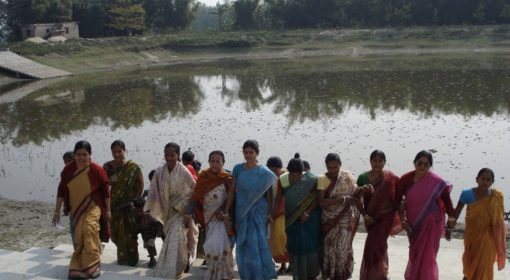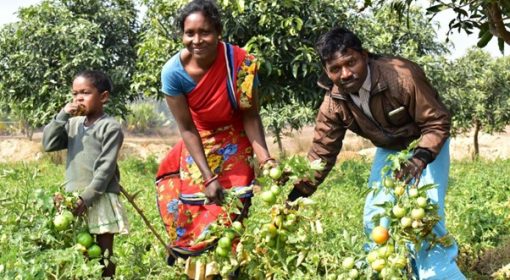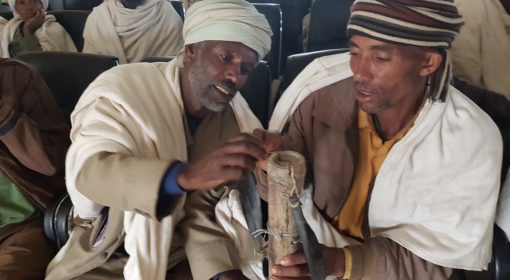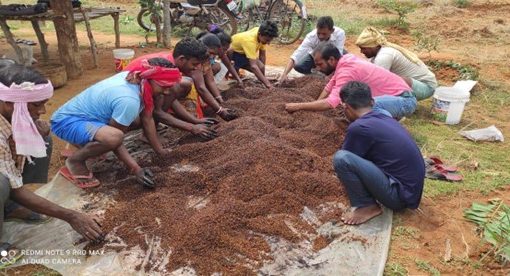By Arpan Mondal (MetaMeta)
There is a natural need for farmers to learn from each other which cropping patterns, cultivars, irrigation techniques, pest and disease control, or poultry/livestock rearing practices work and which do not work. In other words, what are ‘Good Practices’ to follow and what are bad practices to avoid. Such Horizontal Learning by farmers is practical and demand-driven, not undertaken for academic interest.
The term ‘Horizontal Learning’ is defined in many different ways in many different contexts but is essentially characterised as a peer-to-peer learning process. It is different from formal education systems where teachers and students are not peers but come from different walks of life. In formal education systems, teachers and students have a hierarchical relationship, in which teachers determine the topics and design the pedagogy. But in peer-to-peer learning systems, the peers set the learning agenda and pedagogy themselves as per peers need. There has not remained any specific learning boundary.
In the context of agriculture, ‘Horizontal Learning’ is traditionally how farmers have been learning from each other since the first farming communities came into being. None of this is to suggest that Horizontal Learning systems are in conflict with or are superior to formal learning systems. They both have comparative advantages which complement each other.
Applying horizontal learning to rural India
In the Indian states Jharkhand and Madhya Pradesh, a system of formal agricultural education and research has been set up in the form of agricultural universities and research organisations (KVK, ATMA etc.). By any yardstick, these institutions and programmes are of good quality and have generated substantial amounts of useful research over the years. But the extension process of the government system is not so strong that output can reach up to farmers. Here, learnings can be shared through farmer made videos when farmers will document the story.
In order to better understand the scope for horizontal learning and integration into the activities of the Indian organisation PRADAN (Professional Assistance for Development Action), a survey was conducted to understand the existing knowledge-sharing process of PRADAN and challenges in sharing the knowledge. Firstly it was found that PRADAN is deploying a diverse range of mediums and methods to share, exchange and disseminate knowledge, in relation to communities:
- Exposures visit to the areas where activities were placed efficiently.
- Field Demonstrations (Seeing is believing) activity to enhance confidence among the farmers.
- PRADAN has documented several success interventions by Experts through the form of Video, those are being used as Training material to motivate others.
- Cadres (CRPs) mainly share pictures of good farmers plots in different whatsapp groups; as a result others cadres also get knowledge about it and try to implement that practice in other areas.
- Sometimes they organise street play to disseminate the knowledge as a form of awareness creation specially for some social issue
- Miking with Local languages
- Organise some Experience sharing meeting or Reflective meetings for cross learning
- Using of Flash Card, and some Modular training materials during meetings for easy understanding
However, the current methods are also met with the following challenges:
- Exposure visit is a very strong medium of Horizontal learning. But it includes a lot of cost as a reason sometimes teams failed to conduct the exchange visit.
- Sometimes video shows are organised. Those reflection videos are made by other organisations or any professional. But due to electricity problems at the village level, they face problems conducting the video show.
- Lack of Audio visual resources in local dialect. As a result farmers sometimes understand very little, it is one of the major problems.
- Professionals get very little time to document the stories or good practices. And it was shared that success stories do not reach farmers if it is in written form.
To complement the existing knowledge sharing process of PRADAN, the prospect of incorporating visual Horizontal Learning was explored. Horizontal Learning is an age old process; but videos are a relatively new medium. And yet, videos are remarkably well-suited as a horizontal learning tool. Being a visual medium, videos appeal to farmers across different levels of education. They break through barriers of language and literacy by literally ‘showing’ a thing or a concept rather than explaining it through words or still images. Videos are also suited for quick learning, being able to convey an idea in 5-10 minutes that could otherwise take much longer to flesh out. Thus, videos have been in use in agriculture extension for quite some time now. However, that has mostly been in the form of professional productions by big organisations. Useful as they are, there are some gaps they fail to fill. In this context farmer made videos can play a vital role for disseminating the knowledge widely and efficiently.
Farmer Made Videos
Every video is a story, no matter how technical or mundane the subject matter. Producers of high-quality extension videos (organisations and individuals) are usually not from farming communities. Thus, they often fail to speak to communicate with farmers in a language, tone, and sensibility that they best relate to. Compounding this challenge in developing countries is the diversity in language and culture. When farmers themselves would make videos, they would be able to communicate more effectively to fellow farmers. Equally important is the fact that when it comes to videos advocating new practices, farmers find those made by fellow farmers more credible. It would be able to catch people’s attention easily and learning would also strive for a longer time. And ultimately it would help in quick learning and engaging in an activity. Moreover, it would help to spread the learning widely.
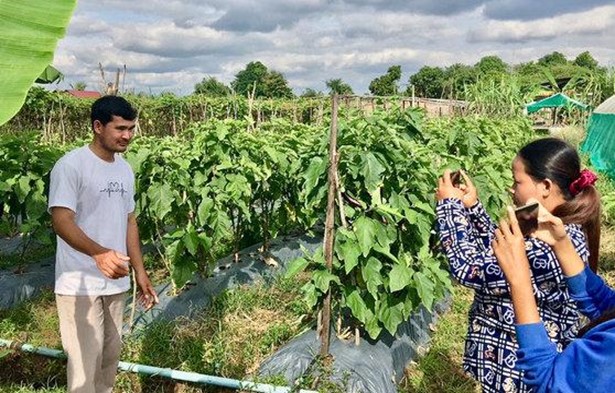
The idea here is to supplement the stream of farmer-made videos in circulation through screenings and other means, with professionally produced videos. As discussed earlier, farmer-made videos and professional productions have their own comparative advantages. For example, farmers cannot be expected to make elaborate videos covering multiple stories or multiple locations; or to track the impact of an intervention over a period of time. Besides, their ability to analyse and present new, high-tech practices and technology is limited. Professional video producers can be engaged to cover all these bases.
Additionally, such videos with high production values inspire farmer producers to make better videos, and act as reference points for best practices in shooting techniques. Some such videos produced in the Green Transformation Pathways project are set to be broadcast on the agricultural programme on local media. Thus, they will help disseminate good practices from the project area to other rural communities in India. PRADAN has a great ground presence comprising CRPs. It would be best to train these CRPs to capture the good practices and share these into farmers whatsapp groups or other social media as preferred.It would help to document the good practices without interference of such support, farmers would be able to see the video according to her/his preferred time. Ultimately it would help in quick learning and engaging in an activity besides spreading the learning widely.

